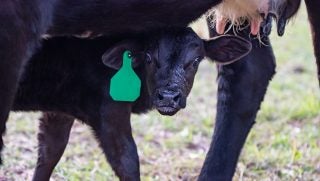Montana State University reached a significant milestone in the university’s research and technology history recently with the U.S. Environmental Protection Agency registration for the disease-fighting bacterium, BmJ WG.
BmJ WG was discovered and named “Bacillus mycoides isolate J” by Barry Jacobsen, associate director of the Montana Agricultural Experiment Station and professor of plant sciences and plant pathology in MSU’s College of Agriculture. It is currently licensed for use by Certis USA, one of the world’s leading manufacturers and distributors of biotreatments for plant pests and diseases.
Jacobsen originally isolated the disease-fighting bacterium in 1994 from a field of sugar beets near Sidney, Montana that had been devastated by a catastrophic Cercospora leaf spot outbreak. Jacobsen’s early research showed the bacterium activated the natural immune defenses of plants against bacterial, viral, and fungal diseases.
“When I first started working with this I thought we really had something special with which to protect sugar beets,” Jacobsen said. “Subsequent research by Certis discovered it could do more than I ever dreamed. It is so gratifying to see how this will help protect so many different crops around the world.”
Certis’ research found the bacterium can be effective in fighting off diseases in almonds, all citrus crops, all cole crops – broccoli, Brussel sprouts, cabbage, cauliflower, etc. – all cucurbits – squash, zucchini, pumpkins – tomatoes, peppers, eggplants, tomatillo, okra, lettuce, legumes, pecans, apples, pears and other pome fruits, potatoes, spinach, and sugar beets.
The patented BmJ spray, called LifeGard, is expected to provide farmers with an effective and natural alternative to traditional chemical crop treatments. It was just approved by the Organic Material Review Institute for use in organic production.


